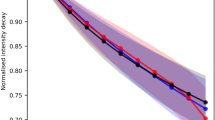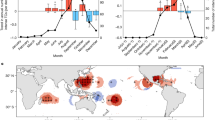Abstract
Every year, Australian oceans experience the genesis of many tropical cyclones (TCs). About 40 percent of these make landfall. Because of the enormous difference in impacts between landfalling and non-landfalling TCs on coastal communities, the benefits would be enormous if it were possible to capture early the potentiality of landfall of a TC that has undergone genesis. Published literature identifies many factors such as location, warm sea surface temperature above 26 °C, conditional instability and high relative humidity in the middle troposphere and low vertical wind shear for the genesis of cyclones. Some of these factors could hold information about the potentiality of landfall while a TC is forming. An investigation into these factors actually revealed that a landfall potential index can be developed that can capture the potentiality of making a landfall. An attractive feature of this index is that it uses values at the time and location of genesis, providing a long and useful lead time. Furthermore, it is made into a dimensionless number, which makes for easy comprehension and interpretation.




Similar content being viewed by others
References
Aberson SD (1998) Five-day tropical cyclone track forecasts in the North Atlantic basin. Weather Forecast 13:1005–1015
Aberson SD, DeMaria M (1994) Verification of a nested barotropic hurricane track forecast model (VICBAR). Mon Weather Rev 122:2804–2815
Bender MA, Ross RJ, Tuleya RE, Kurihara Y (1993) Improvements in tropical cyclone track and intensity forecasts using the GFDL initialization scheme. Mon Weather Rev 121:2046–2061
Camargo SJ, Emanuel KA, Sobel AH (2007) Use of a diagnose ENSO effects on tropical cyclone genesis. J Clim 20:4819–4834
Dare RA, Davidson NE (2004) Characteristics of tropical cyclones in the Australian region. Mon Weather Rev 132:3049–3065
DeMaria M, Kaplan J (2001) On the decay of tropical cyclone winds after landfall in the New England area. J Appl Meteorol 40:1–12
DeMaria M, Knaff JA, Connell BA (2001) A tropical cyclone genesis parameter for the North Atlantic. Weather Forecast 16:219–233
Elsberry RL (1995) Tropical cyclone motion. Global perspectives on tropical cyclones. World Meteorological Organization Report WMO/TD 693, pp 106–197
Gray WM (1979) Hurricane and their formation structure and likely role in the tropical circulation. In: Shaw DB (ed) Meteorology over the tropical oceans. Royal Meteorological Society, Bracknell, pp 155–218
Jagger T, Elsner JB, Niu X (2001) A dynamic probability model of hurricane winds in coastal counties of the United States. J Appl Meteorol 40:853–863
Jarrell JD (1978) Tropical cyclone strike probability forecasting. Contract Report, N0028-78-C-3127, Science Applications Inc Mclean VA, Naval Oceanic and Atmospheric Research Laboratories, Monterey, CA
Kotal SD, Kundu PK, Bhowmik SKR (2009) Analysis of cyclogenesis parameter for developing and nondeveloping low-pressure systems over the India Sea. Nat Hazards. doi:10.1007/s11069-009-9348-5
Lee C-S, Cheung KKW, Hui JSN, Elseberry RL (2008) Mesoscale features associated with tropical cyclone formations in the western North Pacific. Mon Weather Rev 136(6):2006–2023
Marks FD, Shay LK (1998) Landfalling tropical cyclones: forecasting problems and associated research opportunities. Bull Am Meteorol Soc 79(2):305–323
Saunders MA, Chandler RE, Merchant CJ, Roberts FP (2000) Atlantic hurricanes and NW Pacific typhoons: ENSO spatial impacts on occurrence and landfall. Geophys Res Lett 27:1147–1150
Templeton JI, Keenan TD (1982) Tropical cyclone strike probability forecasting in the Australian region. Bureau of Meteorology, Australia. Technical Report 49, pp 1–18
Walsh KJE (2002) Probability of cyclone strike on specific regions of the Queensland coast, given current cyclone position and movement. Aust Meteorol Mag 51:69–75
Webster PJ, Holland GJ, Curry JA, Chang H-R (2005) Changes in tropical cyclone number, duration, and intensity in a warming environment. Science 309:1844–1846
Wu M, Chang W, Leung W (2004) Impacts of El Niño-Southern Oscillation events on tropical cyclone landfalling activity in the western North Pacific. J Clim 17:1419–1428
Author information
Authors and Affiliations
Corresponding author
Rights and permissions
About this article
Cite this article
Saha, K.K., Wasimi, S.A. An index to assess the propensity of landfall in Australia of a tropical cyclone. Nat Hazards 72, 1111–1121 (2014). https://doi.org/10.1007/s11069-014-1058-y
Received:
Accepted:
Published:
Issue Date:
DOI: https://doi.org/10.1007/s11069-014-1058-y




